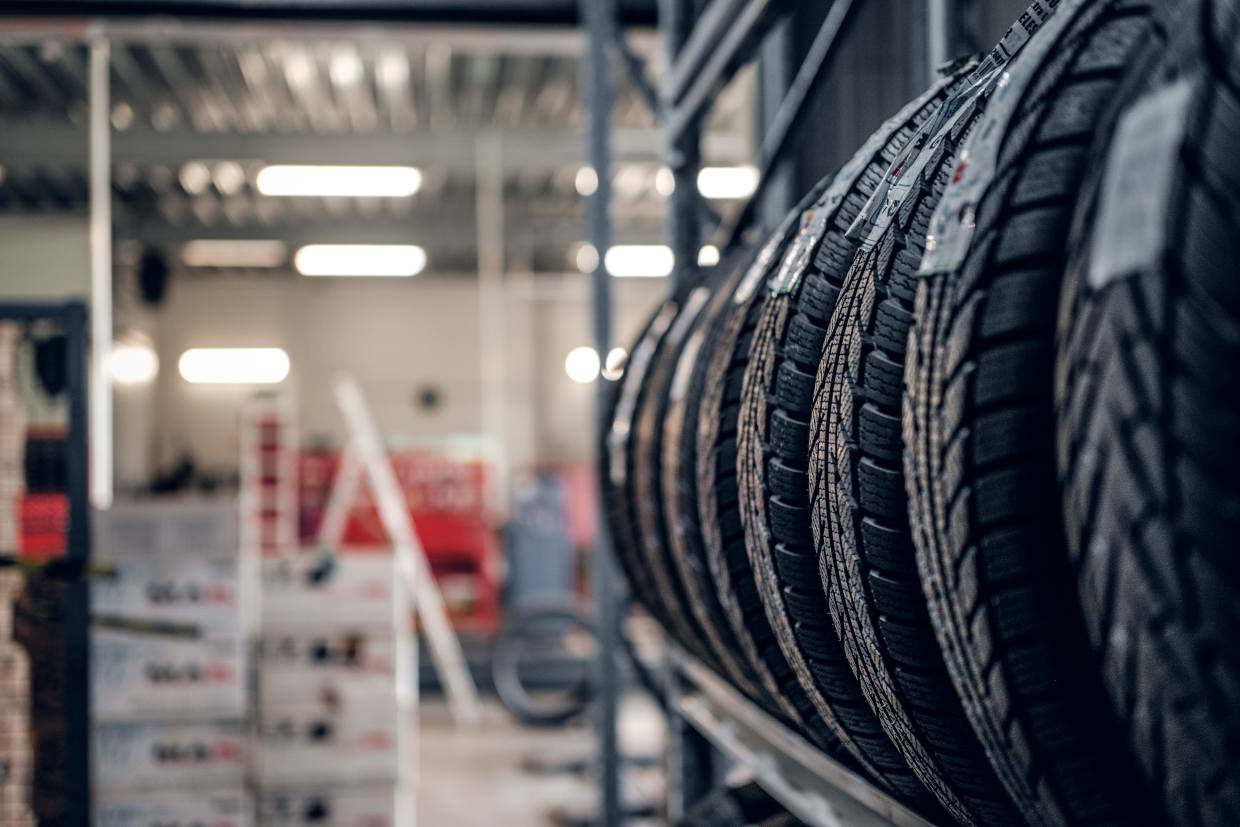9000+ Cashless Garages
96% Claims Settled (FY 24-25)

9000+ Cashless Garages
96% Claims Settled (FY 24-25)



Tyre speed ratings play a crucial role in ensuring the safe and effective operation of vehicles. It helps find the maximum speed at which a tyre can operate effectively without mishaps or premature wear and tear. The letter code denoting one of these speed ratings is written on the tyre's sidewall to help drivers choose tyres.
Understanding tyre speed ratings could enhance handling, stability, and fuel economy. It would guarantee that your tyres can meet the demands of your driving and road conditions. In this guide, you will find what tyre speed ratings are, why they are essential, and how to choose one that best fits your car.


Tyre speed ratings indicate the maximum speed at which a specified tyre can run while maintaining stability and performance. Such ratings are indicated by letters such as S, H, or V stamped onto the wheel's sidewall.
Speed rating becomes a matter of safety because fitting tyres with a lower speed rating than recommended can adversely affect handling, braking, and overall car control. A tyre's speed rating is derived from rigorous laboratory tests that mimic actual driving conditions.
Tyre speed ratings are crucial for ensuring safety, optimal performance, and compliance with regulations. Some key points of the importance of tyre speed ratings include:
Fitting tyres with speed levels lower than those recommended can lead to overheating and, consequently, catastrophic failure at high speeds. This can increase the risk of accidents.
Higher-rated tyres provide better grip, stability, and shorter braking distances. They improve handling, especially at high speeds. With the proper tyre rating, you can expect optimal performance.
In many regions, tyres must have the manufacturer's speed rating. Otherwise, in the event of an accident, you may not be liable for the insurance.
The right speed-rated tyres reduce rolling resistance, improving fuel efficiency. Lower-rated tyres may cause more drag, increasing fuel consumption and thus costing you more.
Speed-rated tyres impact ride comfort. Higher-rated tyres offer a smoother ride at high speeds, while mismatched ratings can cause vibrations and instability during the ride.
Speed ratings impact braking performance. Quality tyres with the requisite rating ensure shorter stopping distances, rendering the driving experience safer during unexpected braking and a safer ride.
Tyre-speed ratings are typically tested in a laboratory to determine the speed at which a tyre can travel while remaining safe, known as the 'safety speed'. Testing is done by mounting the tyre upon a wheel and gradually increasing the speed while the tyre is under a predetermined load.
Heat build-up and structural integrity are monitored during these tests as the wheel speed increases. The test is stopped at the maximum speed the tyre can attain without the slightest failure. A low-speed-rated tyre is never granted even marginal recognition for its speed capability if it cannot reach the required speed level.
Reading tyre speed ratings is simple once you understand the format. The speed rating is represented by a letter at the end of the tyre size code imprinted on the sidewall. Here's how you can decode it with four simple steps:
The speed rating is located on the tyre's rim and is represented by an alphanumeric code. A typical example of code that can be present is 205/55 R16 91V. In this example, 'V' is the speed rating.
Each letter corresponds to a specific speed rating or speed limit in the speed rating chart. The tyre speed rating chart indicates what each letter represents in terms of top speed.
The load index (the number preceding the speed rating) indicates the maximum weight the tyre can support for a smooth ride. For example, in 205/55 R16 91V, '91' represents a load capacity of 615 kg.
Always choose tyres that meet or exceed your vehicle manufacturer's recommended speed rating. Using a lower speed rating than recommended can compromise handling and safety.
Tyre speed ratings show the highest speed a tyre can safely handle. These ratings use letters and appear on the tyre's sidewall after the size details. Below are standard tyre speed ratings with their maximum speed limits:
Tyre speed ratings depend on various factors and concerns that symbolise performance, durability, and safety at multi-speed conditions. Here are the crucial factors influencing tyre speed rating:
High-performance tyres designed for incredible speeds are made with advanced rubber compounds and reinforced sidewalls. For high-speed cars, their tyres experience high rolling friction, which increases the wheel's temperature, making good material quality essential.
Low-profile tyres with shallower tread patterns allow for better high-speed stability and handling. Groove patterns influence how well the tyre dissipates heat and maintains traction. So, generally, high-speed rating tyres have a shallower tread pattern.
As speed increases, tyres generate more heat due to friction with the road. A tyre's ability to withstand high temperatures without degrading its speed rating becomes essential. So, high-speed rating tyres have higher durability.
Speed ratings are tested with a specific load. A tyre with a higher load index may have a different speed rating due to weight distribution and structural stress. Overloading a car's capacity can affect both durability and speed, thus also affecting the speed rating.
Under-inflated or over-inflated tyres will not work correctly at higher speeds. Tyre maintenance shall ensure that the tyres meet the speed qualification safely. Regular maintenance ensures the tyres work optimally.
Generally, tyres undergo laboratory testing before a speed rating is given under controlled conditions. Various authorities across regions have proprietary and governmental regulations. These tests ensure tyres can safely handle the speed and conditions.
Choosing a perfect speed rating tyre for the car becomes very important based on the driving conditions the driver requires. The correct set of tyres can make your ride smoother and safer. One can choose the best-fit tyre for their car based on these checks:
S, T, or H-speed-rated tyres provide comfort and durability for everyday commutes and long-distance travel. This is an ideal tyre speed rating for roads with heavy traffic, such as city driving.
Performance vehicles are equipped with V, W, or Y-rated tyres that offer enhanced high-speed control, stable high-speed handling, and responsiveness, resulting in a more comfortable and responsive ride.
During the winter, choose a lower speed rating for winter tyres. Tyres with lower speed ratings offer better traction and flexibility, enabling improved performance in snowy or icy conditions.
Vehicles for off-road driving or rugged terrains require tyres with lower speed ratings but higher durability. Such tyres are designed with deeper treads and stronger sidewalls.
Trucks and commercial vehicles need tyres with lower speed ratings suited to carrying heavy loads over long distances. Lower-rated tyres with reinforced construction ensure better weight distribution.
Tyre speed ratings are essential in vehicle insurance because they relate to safety. Insurance providers examine the tyre's specifications when those properties are evaluated.
For example, when tyres with an incorrect speed rating are fitted on the vehicle, they can affect premiums and claims. Having the published speed rating on a car makes insurance companies see it as a greater safety risk, which may lead to the rejection of the claim or reduced compensation if the vehicle is involved in an accident.
Vehicle owners should carefully read their insurance policies to avoid complications and ensure their tyres are within the specified specifications. The correct speed rating and regular tyre maintenance lower the risk within the rules of insurance claims and avoid many pitfalls from getting your claim when disputes arise with any insurer.
Taking proper care of your tyres ensures safety, fuel efficiency, and provides the most comfortable ride. Here are a few ways in which you can help keep your tyres in good working condition:
With proper tyre pressure, your chances of accidents will be reduced, and vehicle expenses will be trimmed down.
Swapping tyre positions every 8,000 - 10,000 km helps them wear evenly and last longer. Uneven wear can make your car harder to control.
Tread helps tyres grip the road. If it wears out below 1.6 mm, replace the tyres to avoid skidding. Use a coin or tread gauge to check regularly.
Carrying too much weight strains tyres, making them wear out faster. Always check your car's load limit and distribute weight properly.
A misaligned or unbalanced tyre will cause uneven wear, steering problems, and vibrations.
Abrupt braking, rapid acceleration, and sharp corners shorten the life of tyres. Drive gently to protect them and save fuel.
Even if tyres look fine, they weaken over time. Replace them every 5 - 6 years to avoid unexpected failures. Old tyres can crack and lose grip.
Keep extra tyres in a cool, dry place, away from sunlight and chemicals. Store them upright or stacked correctly to prevent damage.